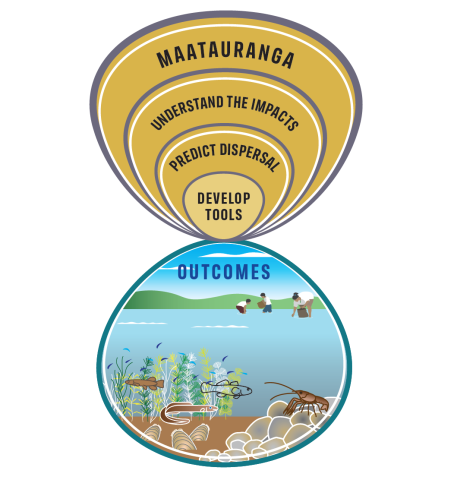Establishment of a solid understanding of gold clam (Corbicula fluminea) ecology and direct impacts (ecological, economic, and social) in an Aotearoa-New Zealand context is critical for the effective application of control tools and predictive modelling.
The scope includes:
- Determining reproductive ecology under local conditions to identify vulnerable life-stages, and their timing so that they can be targeted for control
- Understanding the potential impact of the gold clam on benthic species including threatened native species and plankton communities
- Quantifying expected economic costs associated with the clam invasion over time.
Research underway includes:
In the field
At the lab
Newsletter
Stay up to date with our work by signing up to the programme e-newsletter.
A programme anchored by mātauranga and partnerships
Building relationships between diverse knowledge systems, particularly Mātauranga Māori with scientific research, underpins our work. Our approach is holistic, ensuring that all aspects of the programme are informed by Mātauranga concepts and partnerships, in doing so supporting indigenous perspectives and values in environmental management.
-

Exploring clam impact on native aquatic plants
The invasive gold clam (Corbicula fluminea) can reach very high population densities, which can harm freshwater ecosystems. -

Using artificial samplers to test the presence and settlement of juvenile gold clams
Filter traps are being used to study the invasive gold clam in the Waikato River. -

Invasive gold clam and kaakahi population survey
Assessing depth specific distribution and relative abundance of gold clam and kākahi at Lakes Maraetai and Karaapiro.

